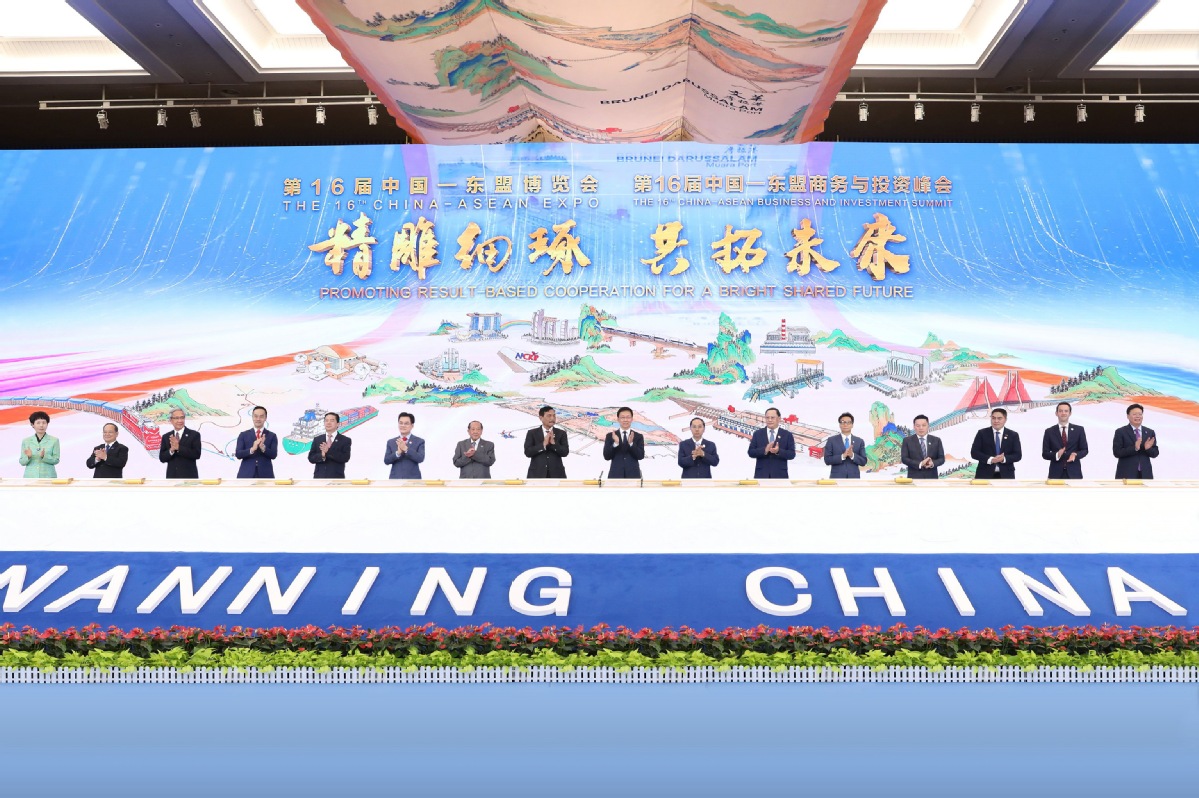Cooperation source of prosperity and stability in SE Asia
By Luo Yongkun | China Daily | Updated: 2019-09-30 07:27

The white paper, China and the World in the New Era, released on Friday describes how throughout its rapid economic development, China has interacted with the rest of world and proves that China's development is a boon to the regional as well as global economies.
Cooperation between China and Southeast Asian countries has played a significant role in China's development. No wonder China attaches great importance to relations with Southeast Asian countries. Bilateral cooperation with Southeast Asian countries began when Vietnam and Indonesia established diplomatic relations with China soon after the founding of the People's Republic of China on Oct 1, 1949.
In 1954, premier Zhou Enlai visited India and Myanmar, and signed agreements on the Five Principles of Peaceful Coexistence, and further promoted the principles at the Bandung Conference (the first large-scale Asian-African conference) in Indonesia in 1955. The principles have been widely recognized as a great contribution to international relations.
After the launch of reform and opening-up in 1978, China more actively participated in international affairs. And the end of the Cold War led to further improvement in relations between China and Southeast Asian countries, increasing trade and people-to-people exchanges. Besides, mutual political trust increased between China and the Association of Southeast Asian Nations after they became dialogue partners in 1991.
Economic cooperation between China and ASEAN member states was upgraded in the 1990s, leading to better communication and economic integration.
When the Asian financial crisis broke out in 1997, dealing a severe blow to Southeast Asian countries, especially Indonesia and Thailand, China refused to devalue the yuan to escape the aftermath of the crisis, and instead provided economic aid for some ASEAN states. And in 2000, the 10 ASEAN member states and China, Japan and the Republic of Korea signed an agreement, which eventually became a multilateral currency exchange arrangement for regional economic stability known as the Chiang Mai Initiative in 2010.
The inking of the Framework Agreement on Comprehensive Economic Cooperation by ASEAN and China in 2002 marked the beginning of the construction of the China-ASEAN free trade area. Now, the Regional Comprehensive Economic Partnership, with its negotiations drawing to a close, is set to further boost regional trade, investment and financial cooperation.
Sino-ASEAN cooperation entered a new phase in 2003 when Beijing signed the Treaty of Amity, Cooperation in Southeast Asia, which made China and ASEAN strategic partners. And the establishment of strategic partnership between China and Indonesia in 2005 led to more bilateral partnerships such as the comprehensive strategic partnerships that China formed with Vietnam, Laos, Cambodia, Myanmar, Thailand and Malaysia, the all-round cooperation partnership with Singapore, and the comprehensive strategic cooperation partnership with the Philippines.
China-ASEAN economic cooperation has greatly benefited from the Belt and Road Initiative, as their trade volume reached nearly $600 billion last year. China is ASEAN's largest trade partner, and ASEAN has become China's second-largest trade partner.
More cooperation projects are in the pipeline, including the regional connectivity railway, highways, ports, industrial zones and the Lancang-Mekong River cooperation mechanism.
China and some ASEAN states have also made strenuous efforts to peacefully resolve their territorial dispute in the South China Sea. They signed the Declaration on the Conduct of Parties in the South China Sea in 2002, and reached an agreement on follow-up action in 2011.
Accordingly, China proposed the international cooperation framework (2011-15) for the South China Sea and neighboring sea areas, which yielded fruitful results thanks to the support of countries in not only Southeast and North Asia but also Africa. The 2016-20 framework advances marine cooperation to combat climate change, protection of the environment and marine ecosystem and biodiversity, disaster prevention and reduction, and marine policy and management.
Besides, China and ASEAN agreed on a single draft negotiating text for the finalization of the South China Sea Code of Conduct last year. And this year, they completed the first reading of the single draft negotiating text of the COC ahead of schedule, which shows the two sides have strengthened practical cooperation and made good progress toward resolving the disputes.
It is therefore certain that China-ASEAN cooperation will deepen, and the two sides will make greater contributions to regional stability and common development.
The author is an associate researcher at the China Institutes of Contemporary International Relations. The views don't necessarily represent those of China Daily.
























